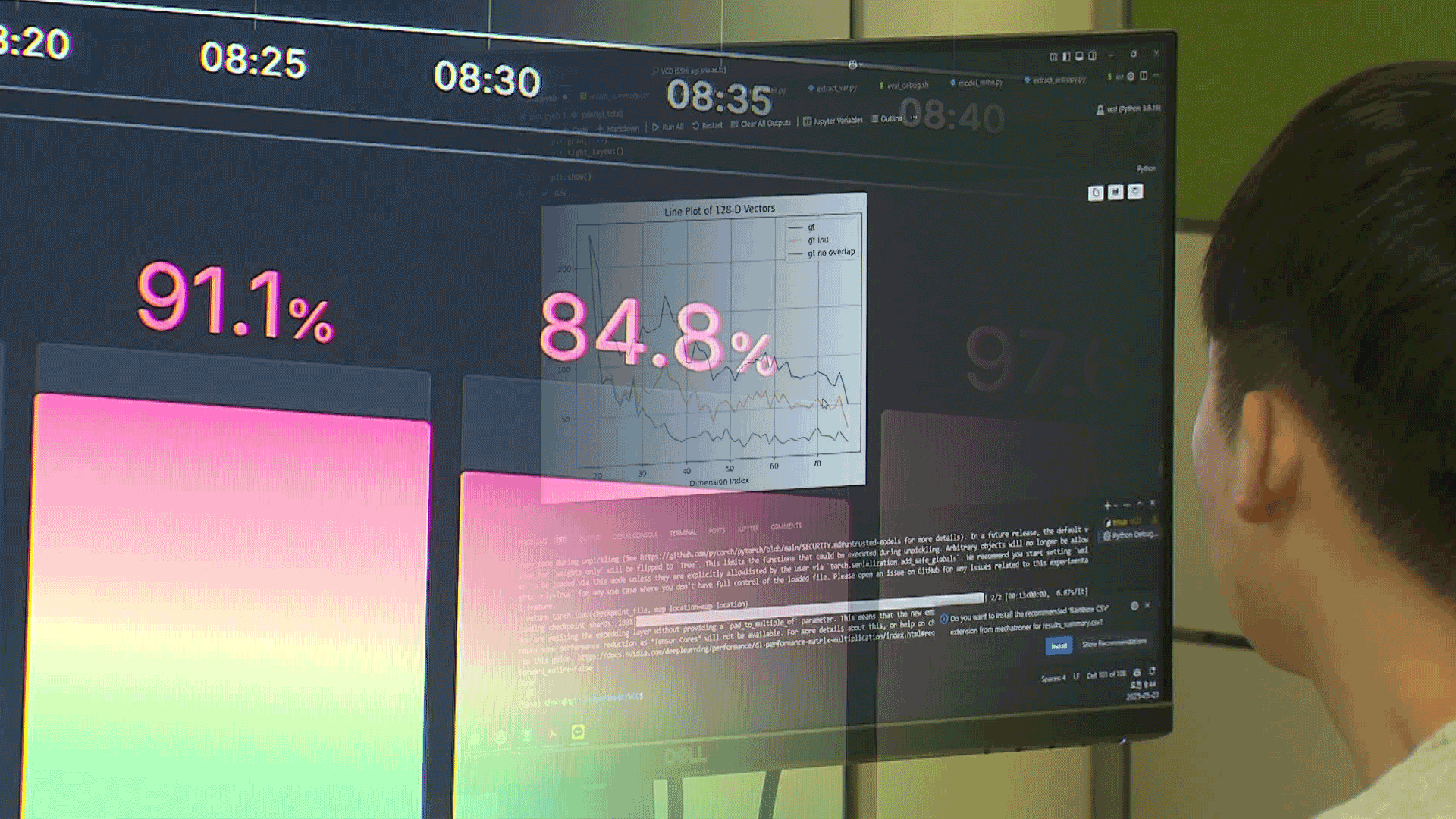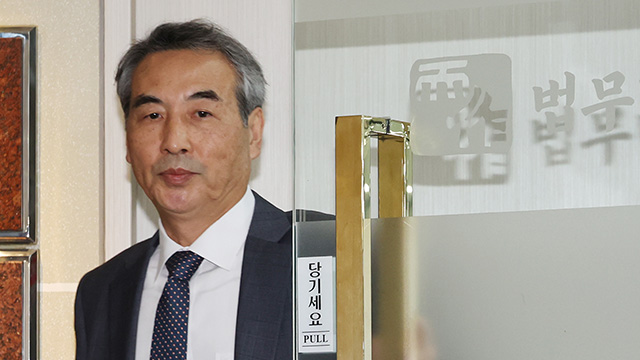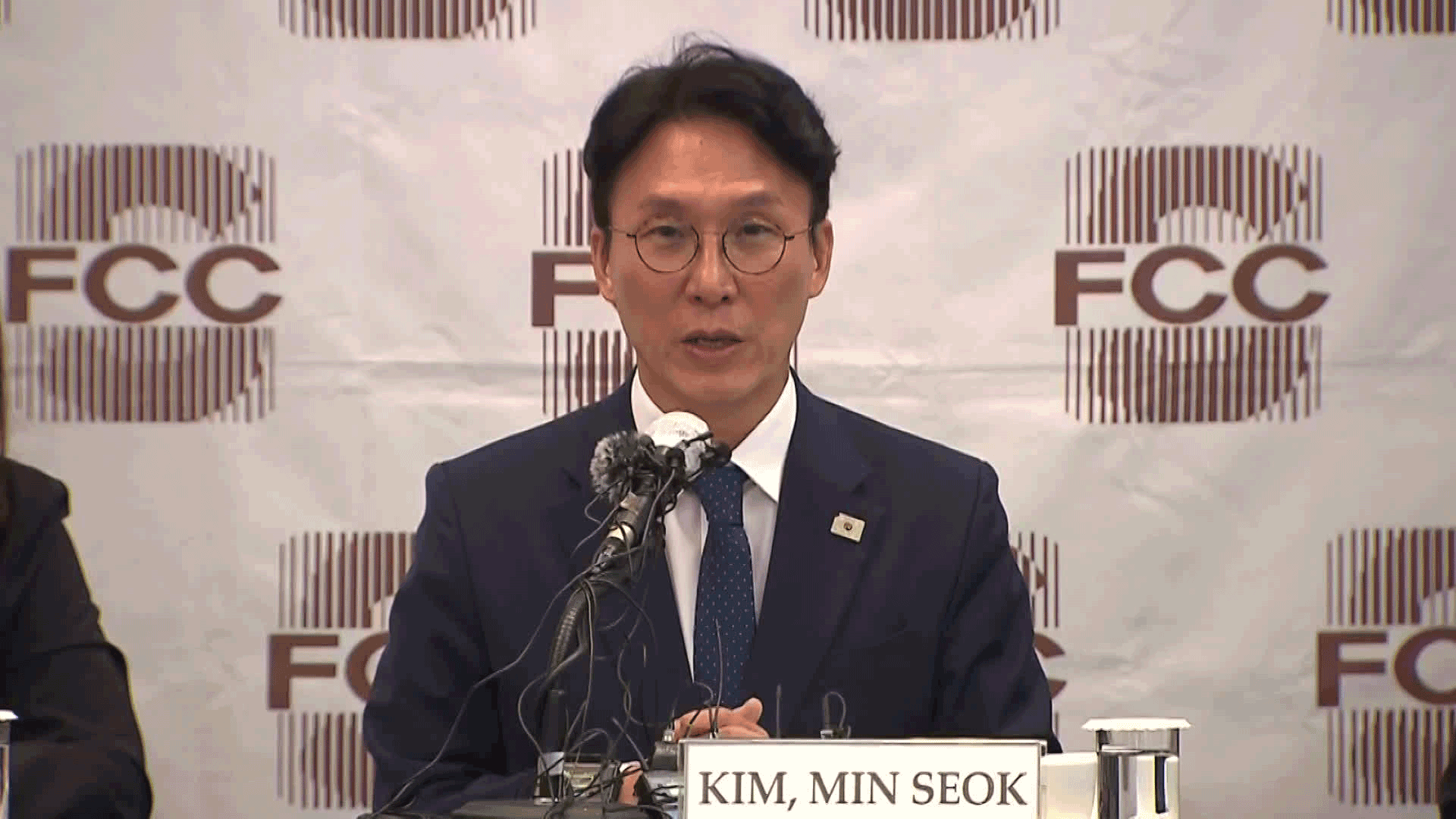[Anchor]
Batteries are essential for calculators.
Similarly, GPUs, which are key to AI research and development, also require 'power' to operate.
They consume significantly more power.
Elon Musk has warned that "the U.S. could face a power shortage next year."
What about our country, which has just started its journey in AI research?
In the metropolitan area, where semiconductor factories, data centers, and various research institutes are concentrated...
It consumes 39.9% of the domestic power production.
Since production in the metropolitan area is insufficient, electricity is being drawn from the East Coast and Chungcheong regions.
As demand is expected to increase in the future, the infrastructure such as transmission networks and substations, as well as power supply plans, cannot keep up with the pace.
The government's goal of becoming one of the 'top three AI countries' suggests that achieving this is not easy given our current power situation.
In our ongoing series, today (6.17) we will examine the challenges at the research and development stage.
Reporter Lee Do-yoon.
[Report]
Where is the highest electricity consumption in Seoul?
It is none other than Seoul National University.
For over ten years, it has been the undisputed number one energy-consuming building.
With many buildings and research personnel, the electricity consumed by Seoul National University in a year is equivalent to the household electricity usage of 390,000 residents in Sejong City for four months.
Despite this, there is a fierce battle over electricity in the laboratories.
The server rooms that run GPUs, which are computational devices used for AI learning and inference, need to be equipped with more high-performance GPUs and cooling systems, but this is not happening.
[Yoon Seong-ro/Professor, Department of Electrical and Computer Engineering, Seoul National University: "Due to the limitations of electrical capacity, we can't install more cooling air conditioners. Even if we pay, we can't receive electricity, so some professors are saying they will find a way to cover the electricity bill, just give us the power..."]
This is because the amount of power coming into the school is insufficient.
A program has even emerged to manage the waiting list for GPU usage.
[Graduate Student, Department of Electrical and Computer Engineering, Seoul National University: "When it gets really bad, there are so many people using it that it goes beyond several pages. I think I've waited close to a week before."]
At Sungkyunkwan University, they manage servers centrally to use the limited power efficiently.
[Graduate Student, Department of Electrical and Computer Engineering, Sungkyunkwan University: "When running an experiment, we usually use one GPU at a time. There are four on the server, but since others need to use them too..."]
Recently, the power consumption of universities has skyrocketed due to AI research.
Most of these are universities in the metropolitan area, where the power self-sufficiency rate in Seoul is only about 10%, and requests to increase power from the Korea Electric Power Corporation are often not well received.
[Ko Jong-hwan/Professor, Department of Electrical and Computer Engineering, Sungkyunkwan University: "(If resources are limited) the number of ideas that can be validated will decrease, and we will inevitably fall behind compared to other competing countries..."]
To handle the power consumption, not only facilities for receiving and transmitting electricity are needed, but also the expansion of the power grid, which takes time.
This is KBS News, Lee Do-yoon.
Batteries are essential for calculators.
Similarly, GPUs, which are key to AI research and development, also require 'power' to operate.
They consume significantly more power.
Elon Musk has warned that "the U.S. could face a power shortage next year."
What about our country, which has just started its journey in AI research?
In the metropolitan area, where semiconductor factories, data centers, and various research institutes are concentrated...
It consumes 39.9% of the domestic power production.
Since production in the metropolitan area is insufficient, electricity is being drawn from the East Coast and Chungcheong regions.
As demand is expected to increase in the future, the infrastructure such as transmission networks and substations, as well as power supply plans, cannot keep up with the pace.
The government's goal of becoming one of the 'top three AI countries' suggests that achieving this is not easy given our current power situation.
In our ongoing series, today (6.17) we will examine the challenges at the research and development stage.
Reporter Lee Do-yoon.
[Report]
Where is the highest electricity consumption in Seoul?
It is none other than Seoul National University.
For over ten years, it has been the undisputed number one energy-consuming building.
With many buildings and research personnel, the electricity consumed by Seoul National University in a year is equivalent to the household electricity usage of 390,000 residents in Sejong City for four months.
Despite this, there is a fierce battle over electricity in the laboratories.
The server rooms that run GPUs, which are computational devices used for AI learning and inference, need to be equipped with more high-performance GPUs and cooling systems, but this is not happening.
[Yoon Seong-ro/Professor, Department of Electrical and Computer Engineering, Seoul National University: "Due to the limitations of electrical capacity, we can't install more cooling air conditioners. Even if we pay, we can't receive electricity, so some professors are saying they will find a way to cover the electricity bill, just give us the power..."]
This is because the amount of power coming into the school is insufficient.
A program has even emerged to manage the waiting list for GPU usage.
[Graduate Student, Department of Electrical and Computer Engineering, Seoul National University: "When it gets really bad, there are so many people using it that it goes beyond several pages. I think I've waited close to a week before."]
At Sungkyunkwan University, they manage servers centrally to use the limited power efficiently.
[Graduate Student, Department of Electrical and Computer Engineering, Sungkyunkwan University: "When running an experiment, we usually use one GPU at a time. There are four on the server, but since others need to use them too..."]
Recently, the power consumption of universities has skyrocketed due to AI research.
Most of these are universities in the metropolitan area, where the power self-sufficiency rate in Seoul is only about 10%, and requests to increase power from the Korea Electric Power Corporation are often not well received.
[Ko Jong-hwan/Professor, Department of Electrical and Computer Engineering, Sungkyunkwan University: "(If resources are limited) the number of ideas that can be validated will decrease, and we will inevitably fall behind compared to other competing countries..."]
To handle the power consumption, not only facilities for receiving and transmitting electricity are needed, but also the expansion of the power grid, which takes time.
This is KBS News, Lee Do-yoon.
■ 제보하기
▷ 카카오톡 : 'KBS제보' 검색, 채널 추가
▷ 전화 : 02-781-1234, 4444
▷ 이메일 : kbs1234@kbs.co.kr
▷ 유튜브, 네이버, 카카오에서도 KBS뉴스를 구독해주세요!
- AI research outpaces power supply
-
- 입력 2025-06-18 00:22:38

[Anchor]
Batteries are essential for calculators.
Similarly, GPUs, which are key to AI research and development, also require 'power' to operate.
They consume significantly more power.
Elon Musk has warned that "the U.S. could face a power shortage next year."
What about our country, which has just started its journey in AI research?
In the metropolitan area, where semiconductor factories, data centers, and various research institutes are concentrated...
It consumes 39.9% of the domestic power production.
Since production in the metropolitan area is insufficient, electricity is being drawn from the East Coast and Chungcheong regions.
As demand is expected to increase in the future, the infrastructure such as transmission networks and substations, as well as power supply plans, cannot keep up with the pace.
The government's goal of becoming one of the 'top three AI countries' suggests that achieving this is not easy given our current power situation.
In our ongoing series, today (6.17) we will examine the challenges at the research and development stage.
Reporter Lee Do-yoon.
[Report]
Where is the highest electricity consumption in Seoul?
It is none other than Seoul National University.
For over ten years, it has been the undisputed number one energy-consuming building.
With many buildings and research personnel, the electricity consumed by Seoul National University in a year is equivalent to the household electricity usage of 390,000 residents in Sejong City for four months.
Despite this, there is a fierce battle over electricity in the laboratories.
The server rooms that run GPUs, which are computational devices used for AI learning and inference, need to be equipped with more high-performance GPUs and cooling systems, but this is not happening.
[Yoon Seong-ro/Professor, Department of Electrical and Computer Engineering, Seoul National University: "Due to the limitations of electrical capacity, we can't install more cooling air conditioners. Even if we pay, we can't receive electricity, so some professors are saying they will find a way to cover the electricity bill, just give us the power..."]
This is because the amount of power coming into the school is insufficient.
A program has even emerged to manage the waiting list for GPU usage.
[Graduate Student, Department of Electrical and Computer Engineering, Seoul National University: "When it gets really bad, there are so many people using it that it goes beyond several pages. I think I've waited close to a week before."]
At Sungkyunkwan University, they manage servers centrally to use the limited power efficiently.
[Graduate Student, Department of Electrical and Computer Engineering, Sungkyunkwan University: "When running an experiment, we usually use one GPU at a time. There are four on the server, but since others need to use them too..."]
Recently, the power consumption of universities has skyrocketed due to AI research.
Most of these are universities in the metropolitan area, where the power self-sufficiency rate in Seoul is only about 10%, and requests to increase power from the Korea Electric Power Corporation are often not well received.
[Ko Jong-hwan/Professor, Department of Electrical and Computer Engineering, Sungkyunkwan University: "(If resources are limited) the number of ideas that can be validated will decrease, and we will inevitably fall behind compared to other competing countries..."]
To handle the power consumption, not only facilities for receiving and transmitting electricity are needed, but also the expansion of the power grid, which takes time.
This is KBS News, Lee Do-yoon.
Batteries are essential for calculators.
Similarly, GPUs, which are key to AI research and development, also require 'power' to operate.
They consume significantly more power.
Elon Musk has warned that "the U.S. could face a power shortage next year."
What about our country, which has just started its journey in AI research?
In the metropolitan area, where semiconductor factories, data centers, and various research institutes are concentrated...
It consumes 39.9% of the domestic power production.
Since production in the metropolitan area is insufficient, electricity is being drawn from the East Coast and Chungcheong regions.
As demand is expected to increase in the future, the infrastructure such as transmission networks and substations, as well as power supply plans, cannot keep up with the pace.
The government's goal of becoming one of the 'top three AI countries' suggests that achieving this is not easy given our current power situation.
In our ongoing series, today (6.17) we will examine the challenges at the research and development stage.
Reporter Lee Do-yoon.
[Report]
Where is the highest electricity consumption in Seoul?
It is none other than Seoul National University.
For over ten years, it has been the undisputed number one energy-consuming building.
With many buildings and research personnel, the electricity consumed by Seoul National University in a year is equivalent to the household electricity usage of 390,000 residents in Sejong City for four months.
Despite this, there is a fierce battle over electricity in the laboratories.
The server rooms that run GPUs, which are computational devices used for AI learning and inference, need to be equipped with more high-performance GPUs and cooling systems, but this is not happening.
[Yoon Seong-ro/Professor, Department of Electrical and Computer Engineering, Seoul National University: "Due to the limitations of electrical capacity, we can't install more cooling air conditioners. Even if we pay, we can't receive electricity, so some professors are saying they will find a way to cover the electricity bill, just give us the power..."]
This is because the amount of power coming into the school is insufficient.
A program has even emerged to manage the waiting list for GPU usage.
[Graduate Student, Department of Electrical and Computer Engineering, Seoul National University: "When it gets really bad, there are so many people using it that it goes beyond several pages. I think I've waited close to a week before."]
At Sungkyunkwan University, they manage servers centrally to use the limited power efficiently.
[Graduate Student, Department of Electrical and Computer Engineering, Sungkyunkwan University: "When running an experiment, we usually use one GPU at a time. There are four on the server, but since others need to use them too..."]
Recently, the power consumption of universities has skyrocketed due to AI research.
Most of these are universities in the metropolitan area, where the power self-sufficiency rate in Seoul is only about 10%, and requests to increase power from the Korea Electric Power Corporation are often not well received.
[Ko Jong-hwan/Professor, Department of Electrical and Computer Engineering, Sungkyunkwan University: "(If resources are limited) the number of ideas that can be validated will decrease, and we will inevitably fall behind compared to other competing countries..."]
To handle the power consumption, not only facilities for receiving and transmitting electricity are needed, but also the expansion of the power grid, which takes time.
This is KBS News, Lee Do-yoon.
-
-

이도윤 기자 dobby@kbs.co.kr
이도윤 기자의 기사 모음
-
이 기사가 좋으셨다면
-
좋아요
0
-
응원해요
0
-
후속 원해요
0















이 기사에 대한 의견을 남겨주세요.